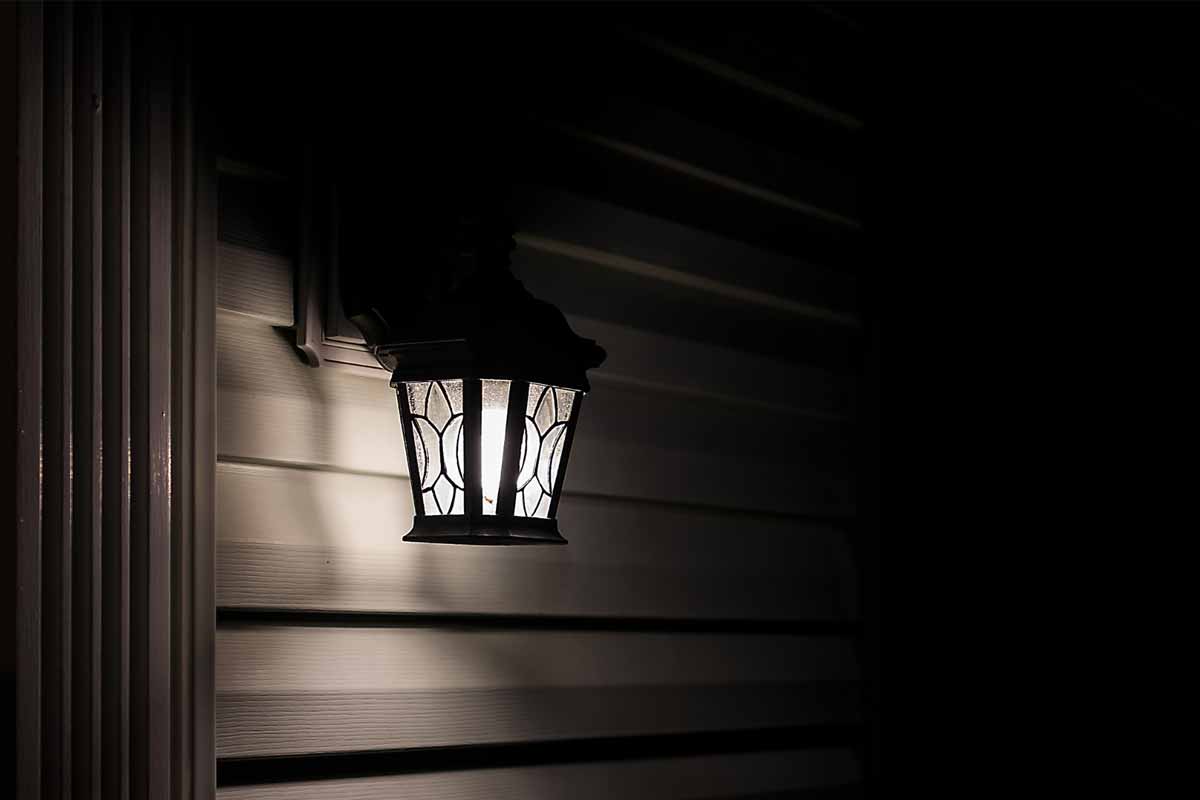Night after night, a small switch shapes how your home looks, feels, and functions. Leaving the Porch Light glowing seems friendly and safe, yet the habit quietly drains money, blurs design, and unsettles nature. Security experts and home pros say a smarter approach starts with darkness used well. As you weigh comfort and safety, think about energy, neighbors, and the living world above your steps. Turn what seems routine into intention, and your entry becomes welcoming without waste.
1. Cut needless energy use and trim your bill
Power you never use still costs you. One exterior lamp burning till dawn pulls from the grid, and the strain adds up across a neighborhood. Dan Staupe notes that light left on without a clear need simply wastes electricity and undercuts meaningful conservation for nothing.
Danny Niemela breaks it down: a 60-watt bulb, left twelve hours nightly, adds about $20 yearly. Several fixtures push that total near $100 to $150, and the sum grows fast. Use a motion-sensor or timer with your Porch Light, because targeted illumination protects without waste.
2. Lighting alone won’t secure your home
Light feels like protection, yet it can backfire. Sara Harshbarger explains poorly placed beams can spotlight door locks, side gates, or dark corners, which helps a trespasser plan. Strong glare hides movement on camera sensors, and the wash narrows your eyes while you scan.
Lighting alone is not a security plan, because it does not stop entry or capture evidence. Pair your Porch Light with locks, cameras, and neighbor awareness, and add motion triggers cue recording. Keep sightlines open, since trimmed shrubs and windows let people see trouble and respond.
3. Nighttime glare hurts design and curb appeal
Design thrives on contrast, not harsh wash. Danny Niemela notes that intense fixtures bleach color, flatten depth, and make materials look tired. Brick loses tone, paint reads chalky, and metal turns cold. The wrong beam direction exaggerates shadows and changes how trim and siding meet.
Treat your Porch Light like a layer, because softer light complements architecture while hard light fights it. Aim beams downward, and pick warm, lower-lumen lamps. Shield fixtures so light lands where needed, then use subtle path accents and uplights at garages and sheds without glare.
4. Avoid lighting that keeps neighbors awake
Light trespass keeps people awake. A bright fixture floods a bedroom across the fence, and the glow bounces off walls and shades while someone tries to sleep. Courtesy matters, because community comfort builds goodwill, and night calm supports everyone’s routines, from early shifts to school mornings.
Turn off the Porch Light, and consider shields that block sideways spill. Aim beams down, since focused light helps you and spares others. Choose lower output lamps, because less glare means safer steps and better relations. Adjustments reduce complaints while lighting key entry paths.
5. Constant lighting can invite intruders
Criminals read patterns. Niemela warns that lights shining at three in the morning can signal an empty house, which tempts a passerby to test a door or window. A steady glow in a quiet street looks odd, and the contradiction draws attention to your entry.
Dan Staupe adds context, because people who leave a Porch Light on nonstop are often away on vacation. Avoid the beacon. Use random timers inside, then add motion outside that triggers briefly. Activity suggests presence, while constant illumination suggests absence, and intruders know the difference.
6. Continuous use accelerates maintenance chores
Continuous operation ages gear. Niemela notes that bulbs accumulate hours, fixtures collect grime, and dust bakes onto lenses while heat rises. The result looks dim sooner, and the finish dulls faster. You spend weekends cleaning housings, tightening fasteners, and scraping residue that builds around gaskets.
Leave the Porch Light on nightly, and maintenance multiplies. Expect more ladder trips, because bugs scorch on covers and leave marks. LED lifespans still depend on temperature and hours, so long runtime shortens output. Regular off cycles, plus wipe-downs, keep parts cleaner and last longer.
7. Bright entry lights attract swarms of insects
Night insects navigate by natural cues, so bright bulbs scramble their paths. Staupe warns that summer evenings turn chaotic. Swarms cluster near hot glass, then pour toward the doorway when you step outside. Bites follow, pets scratch, and wings end up scattered under mats and chairs.
Limit attraction by switching off the Porch Light after evening arrivals. Use warmer color temperatures, since cooler lamps draw species. Choose enclosed, downward-facing fixtures that reduce glare and heat. Add motion activation for brief tasks, the cloud thins while your front threshold stays cleaner.
8. Light pollution harms wildlife and hides the stars
Nocturnal life relies on darkness. Harshbarger explains that exterior lighting confuses birds and insects, and the disruption alters feeding, mating, and migration. Bright cues lure flocks off course and into windows, and hatchlings circle lamps until exhaustion. Neighborhood ecosystems shift while rhythms break apart under glare.
The sky suffers, too. Harshbarger notes that constant glow around a Porch Light adds to light pollution, which drowns stars and hides the Milky Way. Niemela calls it light clutter, because scattered beams shatter night cycles. Calm hours return when excess light stays off.
A small habit that protects budgets and design
Small choices stack up. Flip the switch when you head inside, and costs fall while design improves. Security grows because motion cues action, and neighbors sleep better. Fixtures last longer, bugs scatter, and the constellations return. Plan layers, use timers, and aim beams wisely, since control beats constant glow. A Porch Light works best as a tool, not a signal, and the habit of turning it off restores comfort at home and balance outdoors.
